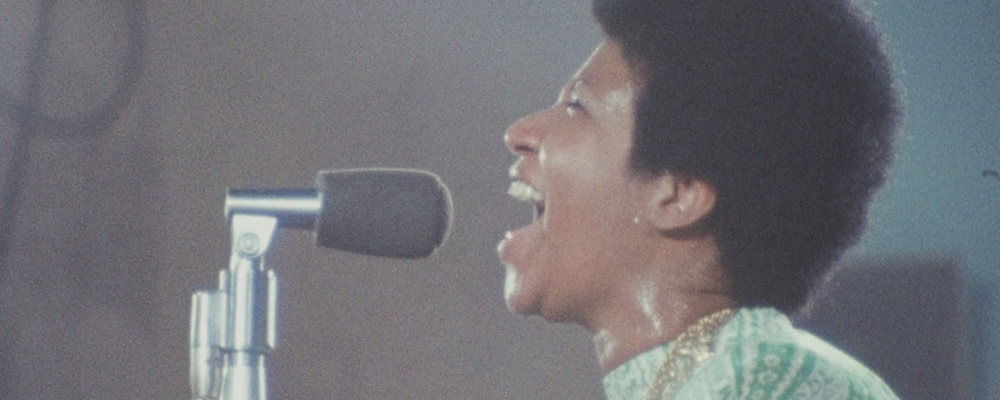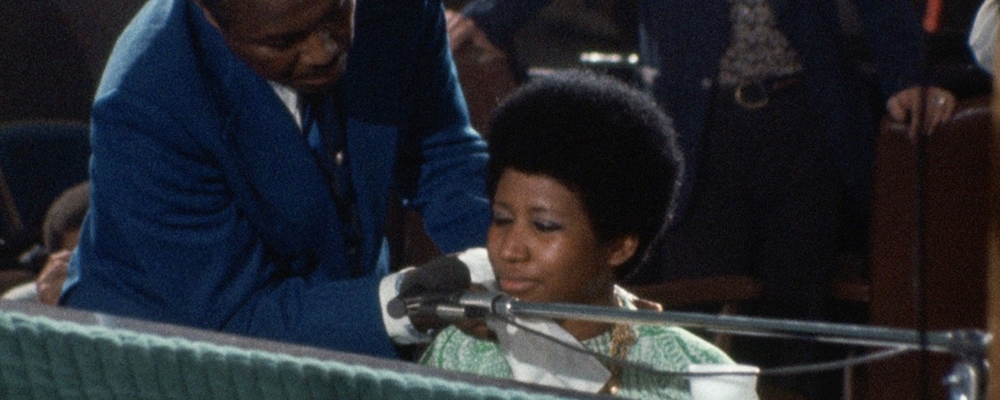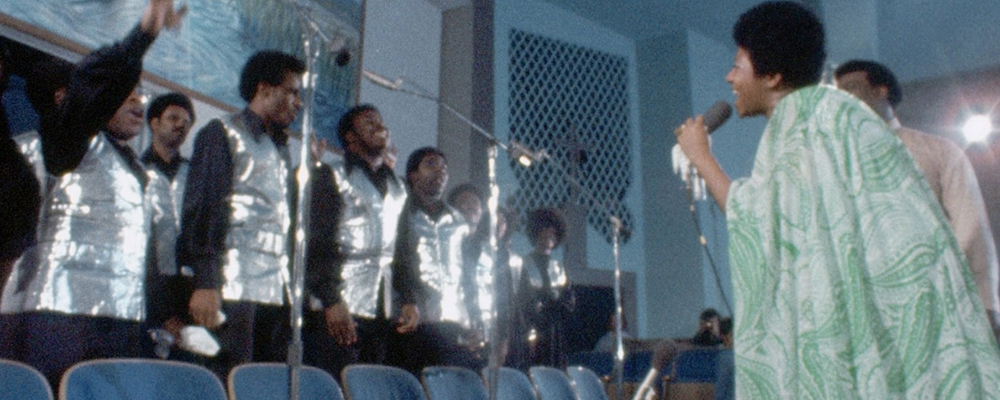‘Amazing Grace’ Captures Queen of Soul Aretha Franklin in All Her Gospel Glory
Adi Mehta
Today, the biggest concerts are often broadcasted live online, sparing the more inert among us the queues and crowds, the sweat and the struggle. Rather than straining your neck for two hours, making intermittent leaps to see past a 6 foot 6 enthusiast in front of you, as people on either side stumble into you and spill drinks, you can veg out in front of your computer watching a highly edited, Hollywood blockbuster reimagining of the concert experience, with cameras angled from numerous strategic locations vying for your attention, enhanced by state-of-the-art rotating graphics and various other amusements. As brilliant as this all is, it’s hard to argue that the music isn’t largely lost in the mix. Strip away all the filigree and technology, and you’ll likely find yourself relatively unmoved by whatever is on display. If you want the real deal, fill up a room with spectators, slap some equipment on the floor, let the performer go at it, and see what ensues. Sometimes, people will muster the resolve to endure the entire act. Occasionally, they’ll smile, nod, and hum. Once in a blue moon, they’ll cry, twitch, undergo paroxysms, visibly attain new levels of enlightenment, and unite in a concerted, harmonious hive mind that leaves you in awe of our collective humanity. Such is the case of Aretha Franklin’s monumental 1972 concert, whose documentation is now available through the film “Amazing Grace.”
The performance captured took place over two days at the New Temple Missionary Baptist Church in Los Angeles — a modest, unassuming setting. From the onset, there’s a casual familiarity among the musicians and audience members, making clear the close-knit community nature of the gathering. This becomes particularly noteworthy when one considers the timeline for perspective. This was half a decade after Franklin’s seminal hit “Respect,” so it’s safe to say she had made it big and enjoyed a proper taste of success by this point. Yet here she was, as down-to-earth as imaginable, embracing her gospel roots in what could be seen as the purest gesture of artistic integrity. She had grown up in the church, and followed the lead of her father, minister C.L. Franklin, recording her first gospel number at age 14. Her crossover into popular music, particularly her taking up of relatively racy topics, by the standards of the day, had provoked some criticism from her base, and this concert marked, for many, a long-anticipated return to form. That said, there isn’t a trace of bitterness or contempt in the crowd. The only conceivable pretension detectable would be in the royal epithets, as the Queen of Soul is introduced by Reverend James Cleveland, the gracious and affable host and M.C., who is widely regarded as the “King of Gospel Music.”
Backed by the Southern California Community Choir, Franklin runs through a proper gospel setlist — “Mary, Don’t You Weep,” “Give Yourself to Jesus,” “What a Friend We Have in Jesus.” She sings them with a vigor and vibrance that will make even the most devout atheists suspend their criticism enough to recognize the beauty in the music. These are songs of inspiration — both in their subject matter and in the reactions they elicit in performer and audience alike. Genre descriptions like “soul” can seem vague and presumptuous, but upon hearing Aretha Franklin, they make sense. Her performances are so inspired, instinctive, direct, and unaffected that they seem to exude directly from the heart, with no use or concern for any middleman. The way her voice flutters, beams, and soars captures the full spectrum of human emotion, and the effect on listeners is expectedly profound. One of the most compelling features of this film is that it exposes you, visually, to people’s real-time reactions. You see eyes water and wide smiles consume faces. There are moments when the viewers’ expressions reveal combinations of sorrow and ecstasy that words simply cannot describe. The peak of the film, of course, is the eponymous song, delivered with a potency and aplomb that more than justify its title.
After this climactic moment, the film skips to day two, and at once, it’s clear that word has gotten out. The intimacy is still there, but there are plenty new faces in the crowd. One noticeable change is that whereas the previous audience was nearly one hundred percent African American, the crowd has slightly diversified. This is noteworthy when one considers that Franklin lived through the civil rights movement, and expressed its sentiments in many of her lyrics. Music had previously been a highly segregated scene. After all, Elvis had scored his early hits covering songs by black artists like Big Mama Thornton and Arthur Crudup, who, to this day, remain largely unrecognized. Finally, the people who actually created the music were beginning to get the attention and credit they deserved. People who stood out like sore thumbs in the crowd had flocked to the church to experience the magic firsthand, and it can make you gush up to see the awe and appreciation in their eyes as Franklin spellbinds them. A particularly conspicuous audience member is the young Mick Jagger, who at one one point stands up, begins dancing passionately, and prompts others in his row to do the same. The synergy in the room is palpable, and the whole scene is absolutely charming.
Eventually, Franklin’s father takes the mic for a little speech, and offers some kind words about his daughter, and at one point the camera catches Franklin at a priceless moment when she couldn’t be smiling wider. He mentions that people keep asking when she’ll return to the church, and answers with gusto, “She never left the church!” And as Franklin rips through performances of “Climbing Higher Mountains,” “God WIll Take Care of You,” Marvin Gaye’s “Wholy Holy,” and finally, “Never Grow Old,” you have to take the elder Franklin at his word. There’s a point at which a lady in a red dress finds herself so moved by the music that she springs up as if possessed, and dances maniacally, making the cameramen exchange nervous glances until they too give into the music and just smile.
All the while, there is no camera trickery, no gimmickry or slick presentational maneuvers of any sort. Remarkably, the man behind the scenes is director Sydney Pollack, who went on to win an Oscar for “Out of Africa.” At the time, he was unable to adequately synchronize the image and sound of the film, which led to the project’s being shelved for decades. Now, after Franklin’s passing last year, technology has finally come to the rescue, as a team of digital experts led by producer Allen Elliot has managed to get the whole production impeccably in sync, offering fans an invaluable addition to Franklin’s already staggering catalogue. Ironically, the same technology largely responsible for cheapening the live music experience has allowed us to enjoy that experience as it once was, in its purest form. “Amazing Grace” is a must-see for any Franklin fan, and a poignant, eye-opening, and thoroughly enjoyable film for anyone who appreciates music and passion.
“Amazing Grace” opens April 5 in New York and Los Angeles, with a nationwide expansion to follow.





